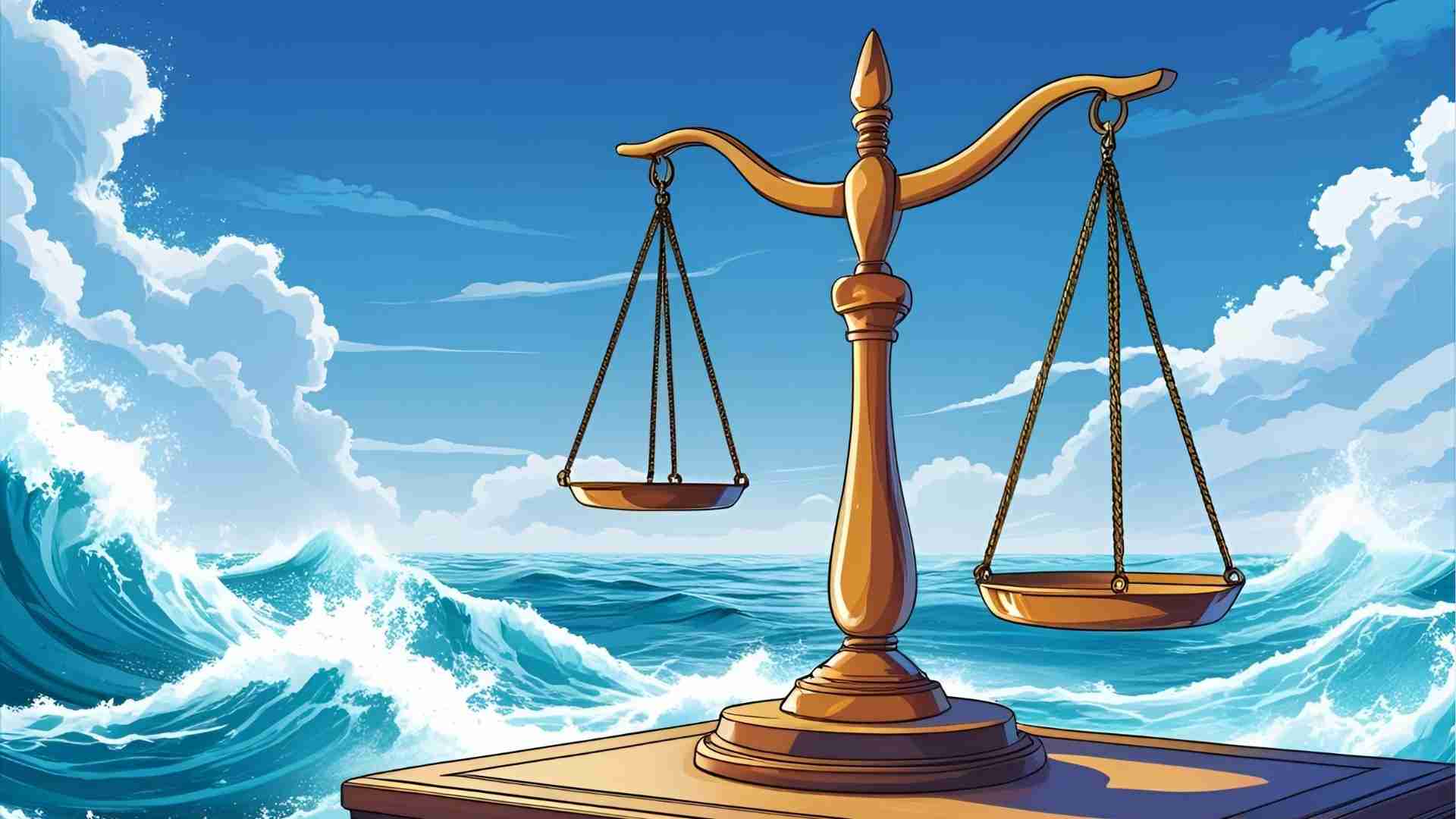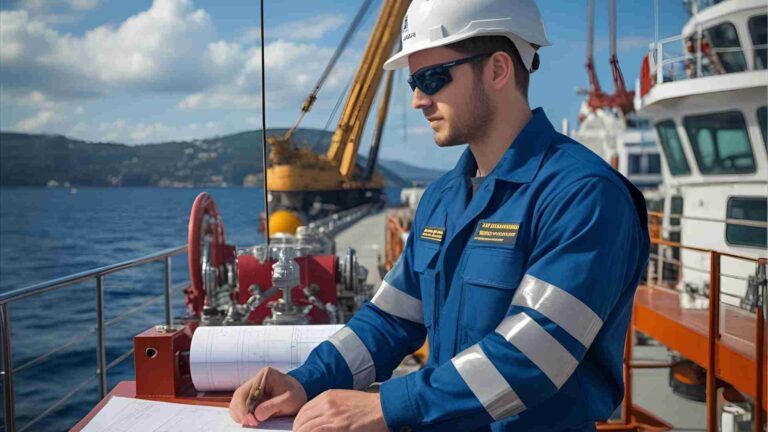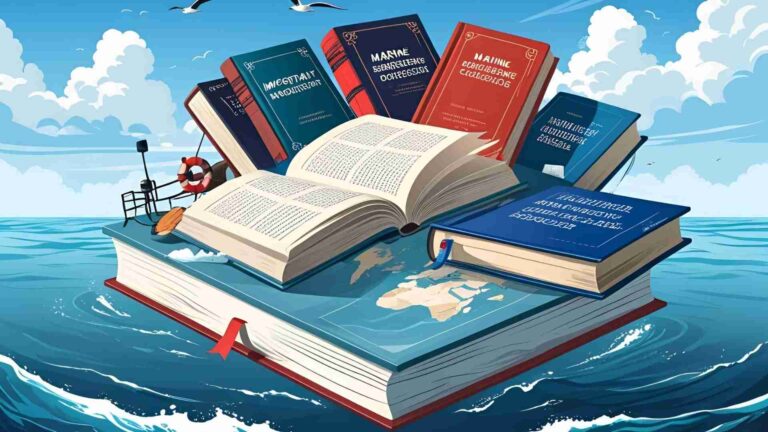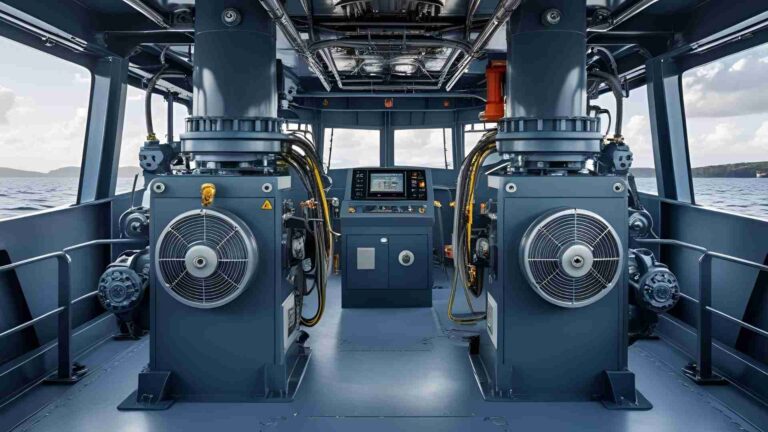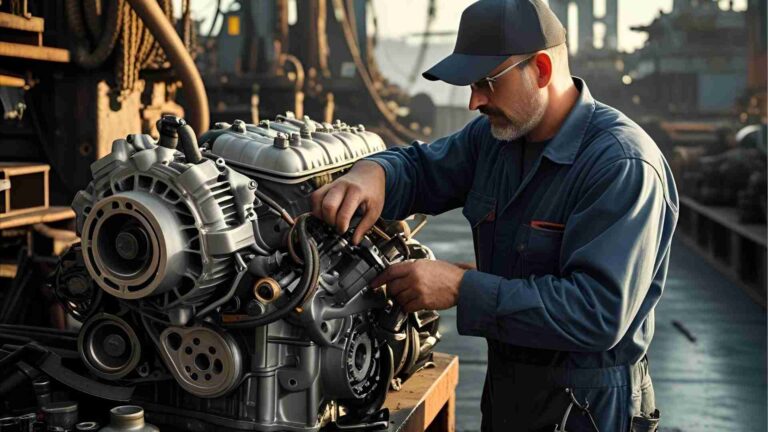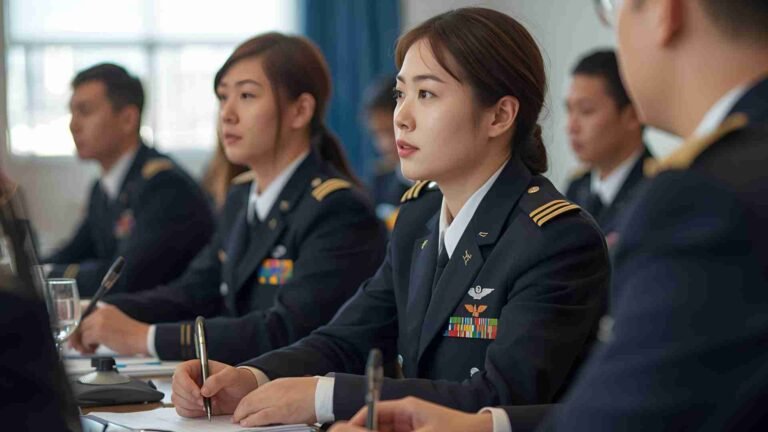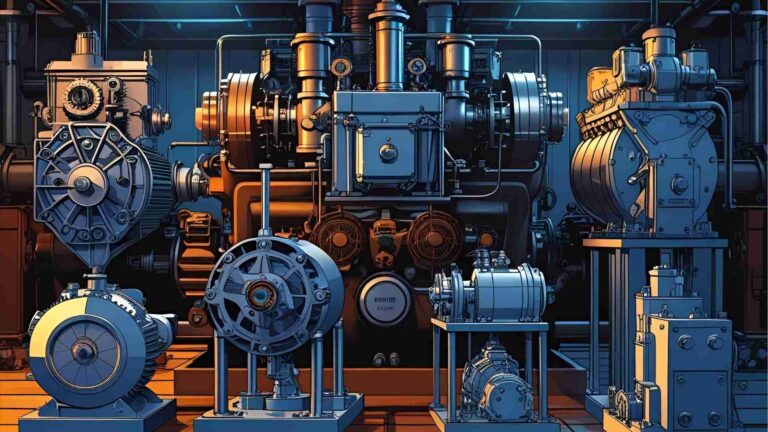A Guide to the 4 Pillars of Maritime Law
Explore the 4 pillars of maritime law—SOLAS, MARPOL, STCW, and MLC—guiding global shipping, safety, and environmental protection.
Maritime law serves as the legal backbone of the global maritime industry, governing everything from international shipping and navigation to environmental protection and crew welfare. With over 90% of global trade transported by sea, maritime law ensures safe, efficient, and sustainable operations across international waters. At the heart of this framework are four key international conventions, often referred to as the “four pillars” of maritime law: the International Convention for the Safety of Life at Sea (SOLAS), the International Convention for the Prevention of Pollution from Ships (MARPOL), the International Convention on Standards of Training, Certification, and Watchkeeping for Seafarers (STCW), and the Maritime Labour Convention (MLC). These conventions, overseen by the International Maritime Organization (IMO), a United Nations agency, provide a standardized global framework for maritime operations. This article delves into these four pillars, exploring their purpose, provisions, and significance for maritime professionals, ship operators, and the global economy.
The Importance of Maritime Law in Global Trade
Maritime law underpins the global economy by facilitating the safe and efficient movement of goods across borders. It provides consistency in shipping routes, cargo handling, and dispute resolution, ensuring seamless international trade. Beyond commerce, maritime law prioritizes safety, environmental protection, and fair labor practices, addressing the unique challenges of operating in international waters, where no single nation holds jurisdiction. For maritime professionals, understanding these laws is not just a regulatory requirement but a critical component of their training, equipping them to navigate the complexities of the maritime industry.
The four pillars of maritime law are universally recognized treaties that set minimum standards for safety, environmental protection, crew training, and labor conditions. While national maritime laws vary, these international conventions create a harmonized framework, ensuring that ships flagged under signatory countries adhere to consistent standards. Below, we explore each pillar in detail, highlighting their provisions, historical context, and practical implications.
1. Safety of Life at Sea (SOLAS) Convention
Overview and Historical Context
The International Convention for the Safety of Life at Sea (SOLAS) is the cornerstone of maritime safety, establishing minimum safety standards for merchant ships operating in international waters. First adopted in 1914 following the Titanic disaster, SOLAS has evolved to address modern safety challenges, with the current version enacted in 1974. The convention applies to vessels engaged in international voyages, excluding warships, cargo ships under 500 gross tons, non-propelled ships, wooden vessels, pleasure craft, and fishing vessels.
SOLAS was born out of tragedy. The Titanic sinking in 1912 exposed critical gaps in maritime safety, including insufficient lifeboats and inadequate crew training. The first SOLAS convention, adopted in 1929, introduced requirements for lifeboat capacity, regular safety drills, and equipment inspections. Over the decades, SOLAS has been amended to incorporate advancements in technology and safety practices, such as fire suppression systems and cyber risk management.
Key Provisions
SOLAS is structured into 14 chapters, each addressing specific aspects of maritime safety:
- Chapter I: General Provisions – Outlines ship survey and certification requirements.
- Chapter II-1: Construction – Specifies standards for ship subdivision, stability, machinery, and electrical installations.
- Chapter II-2: Fire Protection – Details fire detection, prevention, and extinguishing systems.
- Chapter III: Life-saving Appliances – Mandates lifeboats, life rafts, and other survival equipment.
- Chapter IV: Radio Communications – Requires the Global Maritime Distress and Safety System (GMDSS) for effective communication.
- Chapter V: Safety of Navigation – Covers voyage planning, bridge equipment, and navigation protocols.
- Chapter VI: Carriage of Cargoes – Ensures safe loading, unloading, and stowing of cargo.
- Chapter VII: Dangerous Goods – Regulates the transport of hazardous materials.
- Chapter VIII: Nuclear Ships – Sets safety standards for nuclear-powered vessels.
- Chapter IX: Management for Safe Operation – Incorporates the International Safety Management (ISM) Code for ship operations.
- Chapter X: High-Speed Craft – Addresses safety for high-speed vessels.
- Chapters XI-1 & XI-2: Maritime Safety and Security – Enhances safety and security measures.
- Chapter XII: Bulk Carriers – Provides additional safety standards for bulk carriers.
- Chapter XIV: Polar Waters – Introduces the Polar Code for ships operating in polar regions.
Practical Implications
For ship officers, SOLAS compliance is non-negotiable. Maritime academies emphasize SOLAS training, covering safety drills, equipment maintenance, and ISM Code adherence. Regular inspections ensure that life-saving and firefighting equipment meet SOLAS standards, while crew members are trained to respond to emergencies like fires or abandon-ship scenarios. SOLAS also facilitates amendments to incorporate new technologies, ensuring the convention remains relevant in a rapidly evolving industry.
SOLAS Compliance Table
| Chapter | Focus Area | Key Requirements |
|---|---|---|
| II-1 | Construction | Subdivision, stability, machinery standards |
| II-2 | Fire Safety | Fire detection, suppression systems |
| III | Life-saving | Lifeboats, life rafts, survival equipment |
| V | Navigation | Voyage planning, bridge equipment |
| IX | Management | ISM Code for safe ship operations |
2. International Convention for the Prevention of Pollution from Ships (MARPOL)
Overview and Historical Context
The International Convention for the Prevention of Pollution from Ships (MARPOL) is the primary treaty addressing marine pollution from ships, covering both accidental and operational sources. Adopted in 1973 following the 1967 Torrey Canyon oil spill, which released 120,000 tons of crude oil into the sea, MARPOL was strengthened by the 1978 protocol, entering into force in 1983. The convention applies to all vessels flagged under signatory countries, ensuring environmental standards are upheld in international waters.
MARPOL addresses the global nature of marine pollution, where no single nation has jurisdiction over vast ocean areas. It establishes uniform standards for waste management, cargo handling, and ship design to minimize environmental harm.
Key Provisions
MARPOL is organized into six annexes, each targeting a specific type of pollution:
- Annex I: Oil Pollution – Limits operational oil discharges and mandates oily water separators.
- Annex II: Noxious Liquid Substances – Regulates the discharge of liquid chemical cargoes.
- Annex III: Harmful Substances in Packaged Form – Sets standards for packaging and labeling hazardous cargo.
- Annex IV: Sewage – Specifies requirements for sewage treatment and discharge.
- Annex V: Garbage – Regulates waste disposal, including bans on plastic dumping.
- Annex VI: Air Pollution – Controls emissions of sulfur oxides (SOx), nitrogen oxides (NOx), and greenhouse gases, incorporating the Energy Efficiency Design Index (EEDI) and Carbon Intensity Indicator (CII).
Practical Implications
MARPOL compliance requires ship officers to implement strict environmental protocols, such as maintaining oil spill contingency plans, using emission monitoring systems, and adhering to waste disposal regulations. Maritime training programs emphasize MARPOL’s annexes, teaching officers to manage chemical handling, sewage treatment, and air emissions. Non-compliance can result in hefty fines, ship detentions, and environmental damage, making MARPOL a critical focus of maritime education.
MARPOL Annexes Overview
| Annex | Pollution Type | Key Regulations |
|---|---|---|
| I | Oil | Oily water separators, discharge limits |
| II | Noxious Liquids | Chemical cargo discharge controls |
| III | Packaged Harmful Substances | Labeling, packaging standards |
| IV | Sewage | Treatment systems, discharge rules |
| V | Garbage | Plastic ban, waste disposal protocols |
| VI | Air Pollution | SOx, NOx, and GHG emission controls |
MARPOL Compliance Flowchart

3. Standards of Training, Certification, and Watchkeeping (STCW)
Overview and Historical Context
The International Convention on Standards of Training, Certification, and Watchkeeping for Seafarers (STCW), adopted in 1978 and amended in 1995 and 2010 (Manila Amendments), ensures that seafarers meet consistent training and certification standards worldwide. STCW applies to crew members on vessels over 24 meters, including those flagged under non-signatory countries when visiting ports of signatory nations. The convention addresses safety concerns arising from varying levels of crew competency, standardizing qualifications for masters, officers, and watchkeepers.
Key Provisions
STCW is divided into eight chapters, with the STCW Code providing mandatory (Part A) and recommended (Part B) standards:
- Chapter I: General Provisions – Outlines certification and compliance procedures.
- Chapter II: Master and Deck Department – Specifies navigation and cargo-handling competencies.
- Chapter III: Engine Department – Defines skills for engine operation and maintenance.
- Chapter IV: Radio Communication – Sets standards for GMDSS operators.
- Chapter V: Special Training – Covers training for tankers, passenger ships, and high-speed craft.
- Chapter VI: Emergency and Safety – Focuses on fire prevention, survival craft, and medical care.
- Chapter VII: Alternative Certification – Allows flexible certification methods.
- Chapter VIII: Watchkeeping – Ensures effective watchkeeping and rest periods.
The 2010 Manila Amendments introduced updates on fatigue management, environmental awareness, security training, and modern navigation systems.
Practical Implications
STCW compliance is critical for seafarers seeking international certification. Maritime academies integrate STCW standards into their curricula, covering navigation, engineering, safety drills, and security protocols. Officers must complete certified training, accumulate sea time, and pass competency assessments to obtain STCW certifications. These standards enhance maritime safety by ensuring crews are well-trained and capable of handling complex operations.
STCW Training Requirements Table
| Chapter | Focus Area | Key Competencies |
|---|---|---|
| II | Deck Department | Navigation, cargo handling |
| III | Engine Department | Machinery operation, maintenance |
| VI | Emergency Training | Firefighting, survival craft, medical care |
| VIII | Watchkeeping | Rest periods, fatigue management |
4. Maritime Labour Convention (MLC)
Overview and Historical Context
The Maritime Labour Convention (MLC), adopted in 2006 and enforced in 2013, establishes minimum working and living standards for seafarers. Often called the “seafarers’ bill of rights,” MLC applies to vessels flagged by signatory countries and non-exempt ships entering their ports, excluding inland vessels, fishing boats, and warships.
Key Provisions
MLC covers a wide range of labor standards, including:
- Minimum Age: Sets age limits for crew members.
- Medical Certification: Requires health and fitness standards.
- Training and Qualifications: Mandates minimum training levels.
- Employment Contracts: Ensures fair contracts and wages.
- Rest Hours: Regulates work hours to prevent fatigue.
- Accommodations: Specifies standards for living quarters, recreational, and medical facilities.
- Repatriation: Guarantees crew members’ return home after service.
- Compensation: Provides for ship loss or workplace injuries.
- Risk Assessments: Requires evaluations to prevent accidents.
Practical Implications
MLC ensures that seafarers work in safe, fair, and humane conditions. Ship officers must comply with MLC standards, maintaining proper documentation for inspections and ensuring crew welfare. Maritime training includes MLC compliance, teaching officers to manage contracts, rest hours, and onboard facilities. Non-compliance can lead to port state detentions and reputational damage.
MLC Standards Flowchart

The Role of Flag and Port State Control
Maritime law enforcement relies on flag state and port state control (PSC). The flag state, where a ship is registered, ensures compliance with international conventions through inspections and certifications. Port state control involves inspections of foreign ships in national ports to verify compliance with IMO standards. PSC checks certificates, safety equipment, and environmental systems, such as ballast water treatment. Officers must prepare for PSC inspections to avoid detentions or fines.
Why Maritime Law Training Matters
Maritime law training is a cornerstone of maritime education, equipping officers with the knowledge to navigate legal complexities. Courses cover SOLAS, MARPOL, STCW, and MLC, combining theoretical learning with practical exercises like safety drills and PSC preparation. Understanding these conventions ensures compliance, enhances safety, and protects the marine environment. Non-compliance can result in legal penalties, ship detentions, and environmental harm, underscoring the importance of rigorous training.
Conclusion
The four pillars of maritime law—SOLAS, MARPOL, STCW, and MLC—form the foundation of a safe, sustainable, and equitable maritime industry. These conventions, overseen by the IMO, address safety, environmental protection, crew training, and labor standards, ensuring global consistency in maritime operations. For ship officers, mastering these regulations is essential to maintaining safety, compliance, and efficiency at sea. By adhering to these standards, the maritime industry continues to support global trade while safeguarding lives and the environment.
For those seeking legal assistance in maritime accidents, consulting a specialized maritime law attorney, such as those at The Law Offices of Preston Easley, can provide clarity on rights and obligations under international maritime law.
Happy Boating!
Share A Guide to the 4 Pillars of Maritime Law with your friends and leave a comment below with your thoughts.
Read Ship Construction and Basic Ship Stability (Operational) until we meet in the next article.
